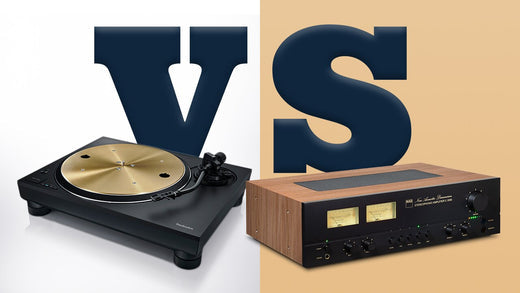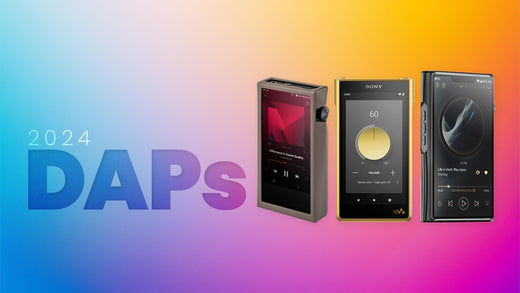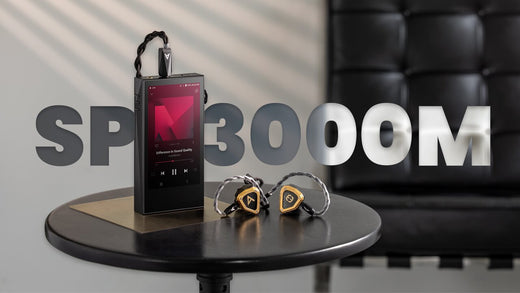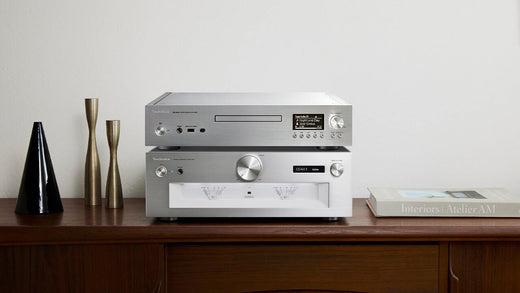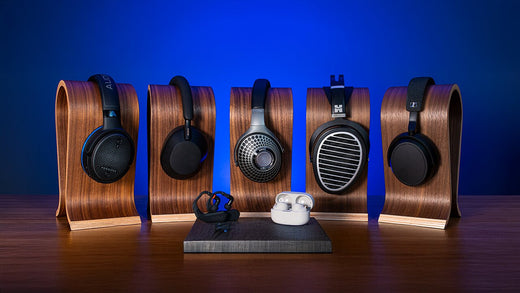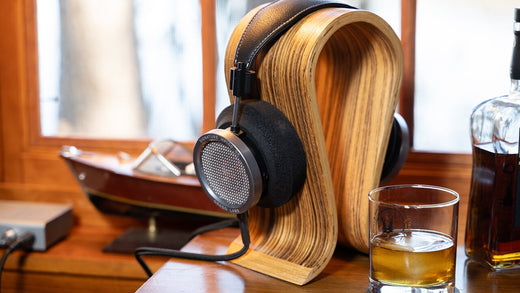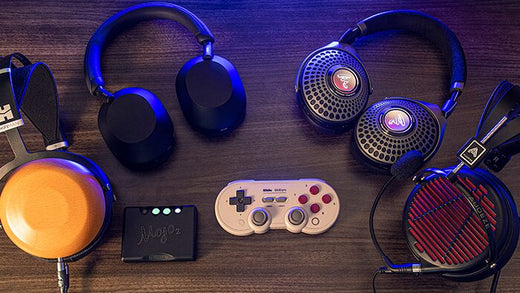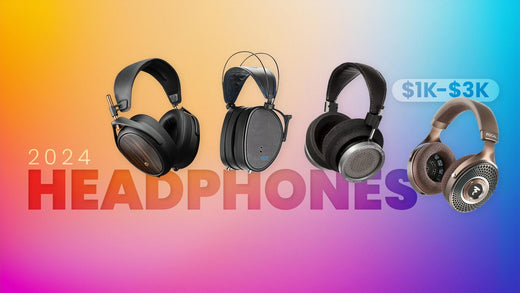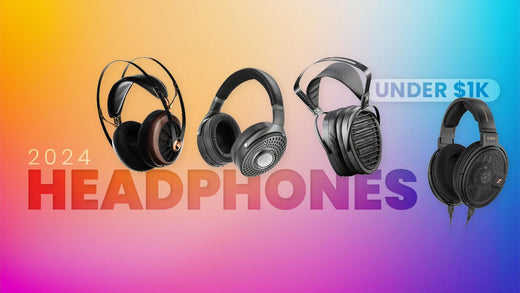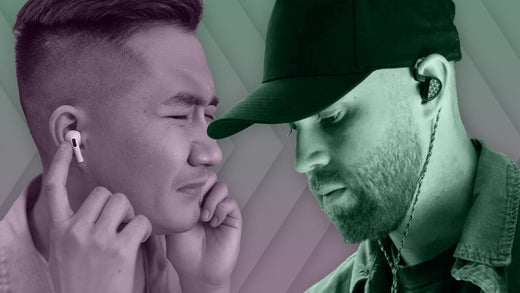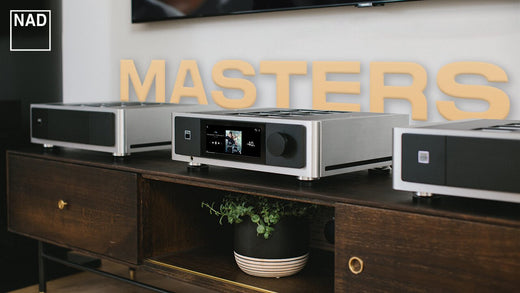The N7 is the latest DAP from Cayin, the creator of the N8ii Flagship DAP that we just had the pleasure of reviewing here at Moon Audio. Cayin makes some of the best DAPs on the market, so I was eager to get my hands on the brand-new N7 and hear what it had to offer. Of course, the biggest difference from the N8ii is the price, which is an astounding $3,499. Right off the bat, that's not going to be for everyone. I get it. But what if you could get a lot of the sound quality without having to pay the flagship-level price? That would be an interesting proposition and one that I think the N7 might be able to fulfill. Delivering solid performance, a discrete 1-bit DSD DAC, and plenty of power, the N7 might be the best new DAP to beat in this price range, so let's take a closer look.
Cayin N7 DAP Music Player Review

The Best Music Player for $2K?
Riff
Notes
Riff Notes
Pros
- Smooth-sounding pure 1-Bit DSD DAC
- Dual amps: Class A/AB
- Cayin's HiByCast/Link and UAT BT codec
- Great battery and power
Cons
- Only 64GB of internal storage
About Cayin
Cayin is a division of Zhuhai Spark Electronic Equipment Co. Ltd. The hi-fi company started out in 1993 manufacturing tube amplifiers under the brand name Spark. In 2003, the company began manufacturing audio products under the name Cayin. For the next 10 years, they focused on the two-channel market before venturing into personal audio. They launched a series of DAPs (digital audio players) and desktop audio products. Cayin also developed a series of portable audio products including portable amplifiers and in-ear monitors. Cayin products run the gamut in price as part of the company's effort to make quality audio available to a range of digital music enthusiasts.
Highlights:

- Discrete Dual BJT Low Pass Filter
- 1-Bit resistor network DSD decoding
- Discrete JFET + BJT headphone amplifier
- 16x MQA full decoder
- Dual amps: Class A/AB modes
- 3.5mm single-ended and 4.4mm balanced headphone outputs
- 3.5mm single-ended and 4.4mm balanced line and pre-outputs
- 3x digital interface: I2S, USB, and Coaxial
- Dual femtosecond oscillators
- 4-ch JRC electronic volume
- Wireless DAC, Bluetooth 5.0, LDAC, UAT, and AAC codecs
- HiByCast and HiBy Link
- Dual-band WiFi 2.4G/5G
- Snapdragon 665, 4GB RAM, TFx1, & 64GB internal storage
- Android 12 DTA
- 9000 mAh battery = 6.5-10 hr battery life, features PD2.0
- 5’ TFT FHD touchscreen
- Sandblasted CNC aluminum
Materials & Quality
Cayin makes some of the best-sounding DAP music players on the market. I'll just go ahead and be upfront about that. That being said, you shouldn't expect the build quality of the N7 to be anything short of top-tier (and it is). I actually just had the pleasure of reviewing the N8ii flagship player, and the build quality of the N7 is very similar. The chassis is a solid brick of CNC aluminum that's just a slightly bit slimmer than the N8ii design (at least to the eye). Cayin opted to go with more rounded edges in the design than their flagship, and the smooth edges with gold accents look absolutely stunning.
Cayin uses a fully-discrete and fully-balanced design for the N7 music player. It's more difficult to engineer a discrete design, but it allows for more room to fine-tune the sound signature, tonal control, and it delivers much better performance than op-amps. Cayin also put a double-sided PCB layout in the N7 which minimizes interference and maintains the layout and length of the signal path as uniform as possible.
On the top of the music player, you'll find the flashy gold volume knob. The knob has a nice design that provides some great texture, and although the volume adjustment isn't as clicky as some other manufacturers, there is some resistance to give you a tactile enough experience while adjusting to your desired volume level. The volume control on the N7 is 4-channel JRC electronic. On the right-hand side of the DAP are the power, track skip, and play/pause buttons. On the left side is the microSD card slot for expandable external storage. On the bottom are your jacks, featuring 3.5mm single-ended and 4.4mm balanced headphone outputs, as well as 3.5mm single-ended and 4.4mm balanced line and pre-outputs. You also have the I2S, USB, and coaxial ports below.
It's a great selection of I/O for a DAP at this price point. The inclusion of both single-ended and balanced jacks is pretty commonplace these days - regardless it's appreciated. What's not common on a DAP are the I2S and coax ports. I'd love to see more manufacturers including I2S ports on their devices. If you're unfamiliar with I2S - the basic advantage is that it uses separate clock and data lines, resulting in excellent data sync, very low jitter, and delivers a fully digital audio signal chain.
The N7 features a 5-inch TFT full-HD touchscreen that is snappy and responsive. Running Android 12 DTA, the OS is your typical Android open-source fun. Be sure to only download and install APK packages from reputable sources. The N7 looks and feels very much like a flagship-level DAP from any other manufacturer. With top-notch engineering, quality materials, and great I/O, Cayin hardly leaves anything out. So, how does it sound?
Sound Quality
The N7 is equipped with a pure 1-bit DSD DAC. The micro 1-bit DAC circuit uses fully-discrete components as well:
- Discrete 1-bit DAC: converts digital signal to an analog signal through a resistor network composed of 128 pcs (4x32) high-precision thin film resistors.
- FPGA: Enhances the digital audio signal and output L+, L-, R+, R- digital bitstream for fully-balanced decoding.
- Audio Bridge: pass-through DSD unaltered, convert PCM to a 1-bit bitstream before transmitting to the DAC circuit.
- Power Supply: the N7 uses a sophisticated low-noise highly-isolated supply circuit to support different functions of digital and analog processing separately.

For my testing setup, I paired the Cayin N7 DAP with the Meze Liric Headphone and a Black Dargon Premium Cable for the Meze Liric. I also used the Focal Stellia Headphones with the Black Dragon Premium Headphone for the Focal Stellia.
The pure 1-bit DSD DAC converts the digital signal to an analog signal by sending it through a resistor network. Essentially each bit of the sample is converted into its analog weight, rather than all the bits being converted in parallel. It's just a different way of doing things. The result is impressive though, and the N7 sounds rich and smooth with just about everything I throw at it. I'd say its a great match for those who love a more musical presentation, however, there is still a good amount of detail on the upper mids and highs. It's not nearly analytical sounding as an Astell&Kern player, so if you like hyper detail and top-end clarity then I would recommend pairing the N7 with a more analytical headphone to help balance out the natural warmth of the DAP.
The N7 has plenty of power for most headphones, portable and full-size. I didn't have any issues with the Meze Liric or the Focal Stellia during my testing, and IEMs will also pair well. The N7 sounds especially great with genres like Jazz, R&B, Blues, and Folk - providing some excellent slap and bass response. Stringed instruments sound natural and resonant. Classic rock sounds nice and chunky, guitars and vocals have weight, and the music player has plenty of natural soundstage to allow the performances to come to life inside your ears. It's just a really, really good-sounding DAP.
The N7 performs beautifully with small ensembles, especially in jazz or folk. The energy emitted from Briubek's Strange Meadow Lark is playful and soothing. The piano phrases are smooth and relaxing, delivering a lovely introduction to the song before eventually passing it off to the saxophone. The breathiness of the sax stands out to me while listening on the N7 - it brings out the tonal phrasing of the player in a way that's almost visual in nature. The N7 delivers the music performance like you're watching it, hearing the intonation and nuances in such a transparent way. I chalk that up to the accuracy of the music player. The recording, especially the high-resolution one, is expressive and resolute. There's a lot of data there that does not go missing or unnoticed with a premium music player like the N7.
Nickel Creek's Out of the Woods is some of my favorite acoustic tone on any recording. Sean Watson's picking is precise, sparkling, yet full-bodied to fill out the lower mids with the lower strings. As far as recorded guitars go, it's one of the best in my opinion. The features of Chris Thile's mandolin and Watkin's guitar during the bridge are melodic and carry the song from phrase to phrase in such a beautiful way. You can hear that Alison Krauss produced this album from start to finish, and that's partially why its lasting influence on the genre is still alive today. The N7 music player handles the intimacy of the arrangement with a delicate mastery, like rocking a baby to sleep. Sure, any music player can be turned to 11 and blast heavy metal music, but the real test and feat I think is by seeing how these premium players handle the most delicate of sounds, including silence. How does the DAP dance around the soft melodies that come and go, and what happens between the notes being played? It's like an OLED screen - the blacks are blacker and the colors are more vibrant. Needless to say, the N7 passes the test with flying colors.

Strange Meadow Lark
by The Dave Brubeck Quartet
(Time Out/Take Five)

Out of the Woods
by Nickel Creek
(Nickel Creek)

Superman
by Goldfinger
(Hang Ups)

Jupiter - The Bringer of Jollity
by Gustav Holst / The Royal Scottish National Orchestra
(Holst- The Planets)
Features
Fully discrete, fully-balanced design: Engineering a discrete design is much more demanding, but it allows more room to fine-tune the sound signature, tonal control, and deliver superior performance over an op-amp based design. Regular stereo circuits are composed of a left (L) and right (R) channel whereas a balanced circuit involves differential inputs and outputs, and hence requires a L+, L-, R+, and R-. This is Cayin’s first attempt to use a discrete circuit for the DAC, LPF, and the headphone amplifier in a DAP. The N7 adopts a symmetrical double-sided PCB layout which minimizes interference and maintains the layout and length of the signal path as uniformly as possible.
Discrete LPF: The N7 uses a discrete-components design for closed-loop gain, negative feedback, and circuit architecture of the LPF. After numerous attempts, Cayin developed a symmetric Class A push-pull amplification circuit based on dual NPN+PNP Bipolar Transistors, delivering high performance in reduced board space and low power consumption/heat dissipation.
Discrete Headphone Amplifier: The N7 uses a 4-channel discrete components-based circuit with low-noise audio grade JFET (Junction gate Field-Effect Transistor) as the differential input stage and BJT (Bipolar Junction Transistor) as the voltage amplification and final output stage. The N7 delivers high-power low-noise output with special optimization for low-impedance IEM and portable-friendly headphones.

-
Synchronized Accurately: the sophisticated resistor network can decode satisfactorily when its algorithm can be synchronized perfectly against different sampling frequencies. The N7 employs two femtosecond crystal oscillators with extremely low phase noise (-100Bc) to facilitate high precision low jitter playback. Low jitter also minimizes digital artifacts and enhances the musicality and naturalness of the digital audio playback.
-
Dual Amplifier Operation Mode: The dual amplifier operation mode enables users to switch between Class A and Class AB modes instantly through the pull-down menu. You can customize the sound signature to your personal preference, music genres, and/or matching with different IEMs or headphones.
- Design Details: Class A amplification requires all channels to have near-identical gain, and Cayin has matched critical components accordingly and manually installed them to the PCB before reflow soldering. The static current must also be well-controlled so that the discrete components will remain perfectly stable in operation during saturation mode. Multiple adjustable resistors are installed so that Cayin is able to fine-tune the PCBA manually in order to match their reference design consistently throughout the production line.
When it comes to the overall specs, however, I will say that I'm fairly disappointed that a $2K music player only comes equipped with 64GB of internal storage. I would think at this price point that 256GB would be standard - heck, even the flagship N8ii only has 128GB. When we're talking about high-resolution music players, that just doesn't afford the owner much room for large files. Of course, you can expand this with the microSD slot for external storage, but I expect more internal storage when I'm cashing out this much money for a music player. The microSD slot can support basically any card size your wallet can handle since they're compatible with any card size across the board - as long as it's from a reputable brand.
Comparisons
Cayin's flagship N8ii DAP is a music player that stands alone in a sea of absolutely amazing sound. In fact, it has a lot of similarities with the N7, with many of the key design elements getting carried over.
The N8ii is equipped with the ROHM BD34301EKV DAC chipset in a dual configuration (x2). This is the first time that the chipset has been used in a portable music player. Cayin operates these chips in mono mode for better performance as well. The ROHM chips are natural-sounding, and as much as I can tell are about as accurate as you can get. The ROHM Chips decode DSD as pure 1-bit here, and this is only just the first step in a much larger and more nuanced audio circuit design.
The 1-Bit DSD DAC in comparison is very smooth sounding. N8ii's ROHM DAC certainly has more detail retrieval, and the Korg Nutubes provide more depth and texture to the sound, especially if you're a fan of having a more vintage tone. The N8ii sound is more nuanced, as should be expected for a flagship DAP. Like the N8ii, the N7 has the ability to switch amp modes between Class A and Class AB, which also affects the tone of the music in its own way. Switch amp modes affects the music similarly on both the N8 and N7, depending on what kind of sound you like better, or if you prefer more efficiency.
As far as controls go, both DAPS are designed almost identically, the only exception being the standalone balanced output jack on the N7 (whereas the N8ii has a single balanced port for the headphone and line out - simply switch the setting in the pull-down menu on the music player). The N8ii comes equipped with a little more internal storage, at 128GB, whereas the N7 only has 64GB. Also, the N8ii supports more Bluetooth codecs, as well as supports both transmit and receive applications.
Bottom line is that the N7 can't compete with the N88ii in regard to head-to-head sound quality. The N8ii is sonically superior in every way, but the N7 retains a lot of what makes the N8ii sound great, with fewer nuances and a smooth listening experience.
The Cayin C9
I want to make a quick note here about the C9 amplifier from Cayin. Pairing your N7 or N8ii with the C9 provides you with some of the best portable sound quality I’ve ever heard on-to-go. The C9 packs a ton of power to make sure you’re driving any headphones or IEMs as efficiently as possible with dual (high or low) gain control, and depending on the workload and settings, you can get up to 15 hours of battery life. It has dual amp operation mode like the DAP counterparts, allowing you to switch between Class A and Class AB.
The C9 has a tailored-designed, fully balanced 40ch dual timbre circuit. It comes equipped with a quad set of Toshiba 2sk209 JFET and a pair of KORG Butube 6P1 double direct heated triodes. They're applicable to both single-ended and balanced phone output.
- Vacuum Tube Timbre Circuit: this is a redesigned timbre circuit featuring the two miniature double direct heated triode (DHT) Nutube 6P1. Applicable to both single-ended and balanced output, with carefully implemented NFB, reduces THD+N to 0.03%. It delivers a euphoric and energetic presentation with the utmost delicacy.
- Solid State Timbre Circuit: The solid state option is a fully discrete buffer and amplification audio circuit. It's designed around two matched pairs of high-quality, low-noise audio frequency Toshiba 2sk209 JFET. They deliver a warm and rich timbre that is realistic and engaging.
The audio circuit and amp settings of the amplifier, combined with the settings of the DAP, and you have an unlimited sonic pallet at your fingertips to adjust as your music listening preferences require. It’s a remarkably versatile “tool” that adds significant audio enhancement to your music player, and we’ll be doing a more robust analysis of the C9 at a later date, so stay tuned!
Firmware Update
It's always a good idea to keep the firmware up-to-date on your music players. At the time of writing this review, Cayin just released an updated firmware version for the N7 DAP. You can check out some of the updates below:
N7 Firmware V1.2 - New Functions and System Optimization:
- Rectify the occasional non-responsiveness of control buttons (Play/pause, Next, and Prev) when the user pauses their playback.
- Rectify the incorrect date and time issue after turning off the DAP
- Enhance compatibility with streaming service that required SElinux support
- Modify the selected User Interface
- Other bugs fixed and system optimization.
Cayin will release firmware updates to enhance and optimize N7 as deemed required. Users can update the firmware through OTA or local updates. To manually download the firmware, please visit their official website below:
Be sure to take note of the following before updating your DAP's firmware:
- Please make sure the device has not less than 30% battery power, otherwise please charge up the player before you proceed to a firmware update.
- Please make sure your N7 has more than 1GB of storage before the firmware update.
- Do not operate the device during a firmware update.
- During a firmware update, the device will turn off and reboot automatically. If the device does not reboot 3 minutes after turned off, please press and hold the POWER BUTTON for 3 seconds to boot up the device, the device will resume the firmware update process.
- Please delete the firmware file from the TF card or internal storage after you have completed the firmware update process
To update your N7's firmware:
OTA Update Procedures
1. Connect the N7 to the internet via Wi-Fi.
2. Enter the Settings menu, and then proceed to “System” -> “Wireless Update”.
3. Press “Check for updates”, system will check for new firmware.
4. Press “Download” when your DAP detected a new firmware. The N7 operating system will download the new firmware as instructed.
5. Press “Install now” after the firmware is successfully downloaded.
6. Press “OK” at the pop-up dialogue, system will start installing the new firmware.
Local Update Procedures
1. Download the latest firmware update package from the SUPPORT center of Cayin official website (en.cayin.cn), you should receive a compressed file as cayin_N7_XXXX.zip which is used for N7 firmware update.
2. DO NOT decompress the zip file.
3. Copy the firmware file into the root directory of N7 internal memory or TF card, insert the TF card into N7 before you proceed to next step.
4. Enter the Settings menu, and then proceed to “System” -> “Wireless Update”.
5. Press the “┇” icon on the top right corner of the screen.
6. Select “Local updates” in the pop-up menu.
7. Proceed to the directory where the firmware file is located, then select the firmware file.
8. Press “INSTALL NOW”.
9. Press “OK” at the pop-up dialogue, system will start installing the new firmware.
Dragon Cables
For my testing setup I paired the Cayin N7 DAP with the Meze Liric Headphone and a Black Dargon Premium Cable for the Meze Liric. I also used the Focal Stellia Headphones with the Black Dragon Premium Headphone for the Focal Stellia. The Black Dragon premium cables provided more body and warmth to the music for the specific pairings with the Focal Stellia and the Meze Liric. Your cable recommendation might be different with the Cayin N7 based on your personal headphones. Feel free to reach out to us and we'll be more than happy to suggest a personalized recommendation for your setup.
Generally, stock audio cables are manufactured with subpar materials, metals with impurities, poor geometries, and an overabundance of layers to make them look and feel like a fire hose. Inconsistency and lack of quality control in stock cables can lead to poor sound quality and a veiled sound vs what the musician intended for you to hear and feel from the music. Dragon cables are handcrafted with the highest standards and made to order according to your specific needs. At Moon Audio, we create a custom cable for you using the highest quality UP-OCC silver or copper conductors that can be manufactured. UP-OCC metals are void of impurities and are optimized for signal transfer and sound quality. We have one of the largest collections of audio and headphone connection options available online and we create limitless audio cable options depending on your specific gear and needs.

Why Dragon Cables?
You’ve heard the saying that a chain is only as strong as its weakest link, right? Well, the same applies to your brand-new audiophile-grade headphone or other audio components. The weakest link, in this case, is your stock cable or the cheap interconnects the manufacturer threw in the box just to get you up and running. Why is the cable always an afterthought, when it’s just as important as the rest of your system? At Moon Audio, we use the best raw materials in our cables to unveil your music. We believe the materials matter and your audio cables should have the same care and craftsmanship that manufacturers put into their audio components and headphones. Audio cables are ultimately the connection to your music. The fact remains that cabling is often considered the last priority to that of the main product and a means to cut down the overall production costs. It’s as simple as that.
The Verdict
The N8ii DAP is the flagship DAP from Cayin, but the N7 gets you a lot of the way there without having to sell your kids or an arm and a leg to do it. You'll like the natural and smooth-sounding audio circuit, and I find myself just really enjoying the overall presentation that the DAP provides. It pairs well with most genres, and at two thousand dollars, it's a much easier pill to swallow if you're looking for a premium listening experience. I think it's one of the best-sounding DAPs at this price range, so if you're in the market for a new DAP, be sure to check out the N7 music player from Cayin.
Featured Products
What's in the Box
- Cayin N7 DAP Music Player
- N7 Leather Case
- Right-angle 2.5mm to 3.5mm Single-ended adapter
- Right-angle 2.5mm to 4.4mm Balanced adapter
- Quick start guide
- Warranty
Videos
Cayin N7 DAP Music Player Review Video
(Coming Soon)
Cayin N8ii DAP Music Player Review Video
(Coming Soon)
Specifications
- MCU: Snapdragon 665
- System: Customized Android 12
- Display: 5" (1080 x 1920) TFT multi-point touch screen
- Google Play: Preinstalled
- Lossless: DTA bypass Android SRC
- Memory: 4GB LPDDR4 RAM
- Storage: 64GB Internal Storage TF x1 (support up to 1TB)
- Wi-Fi: 2.4G/5G IEEE 802.11a/b/g/n/ac
- Bundled Player: Cayin Music; HiByMusic (HiByCast supported)
- Bluetooth: BTv5.0 with LDAC, UAT, AAC, SBC
- Multi-Color Smart LED: Playback Sampling Rate, Home, charging indicator
- Battery: 3.8V 9000mAh (34.2Wh)
- Dimension: 142 x 77.8 x 22.2 (mm)
- Audio Bridge: DSD direct Pass through PCM transcode to DSD512
- FPGA: Re-clock, De-jitter, Re-shaping DDC
- DAC: Fully Balanced Discrete 1-Bit Resistor Network DSD DAC
- LPF: Discrete BJT circuit
- Vol. Control: 4 Channels electronic
- Head Amp.: Discrete, 4-Ch Fully Balanced
- Phone Out: 3.5mm (Single-Ended) 4.4mm (Balanced)
- Line Out and Pre Out: 3.5mm (Single-Ended) 4.4mm (Balancd)
- Digital Interface: 1S, USB Audio (in and out) SPDIF Coaxial (USB-embedded)
- USB Type-C: USB3.1, OTG Storage, Digital Audio PD2.0 (QC2/3 not supported)
- Physical Control: Volume knob, Power On/Off Playback control buttons
- Chassis: Sandblasted CNC Aluminum
- Net Weight: ~380g









